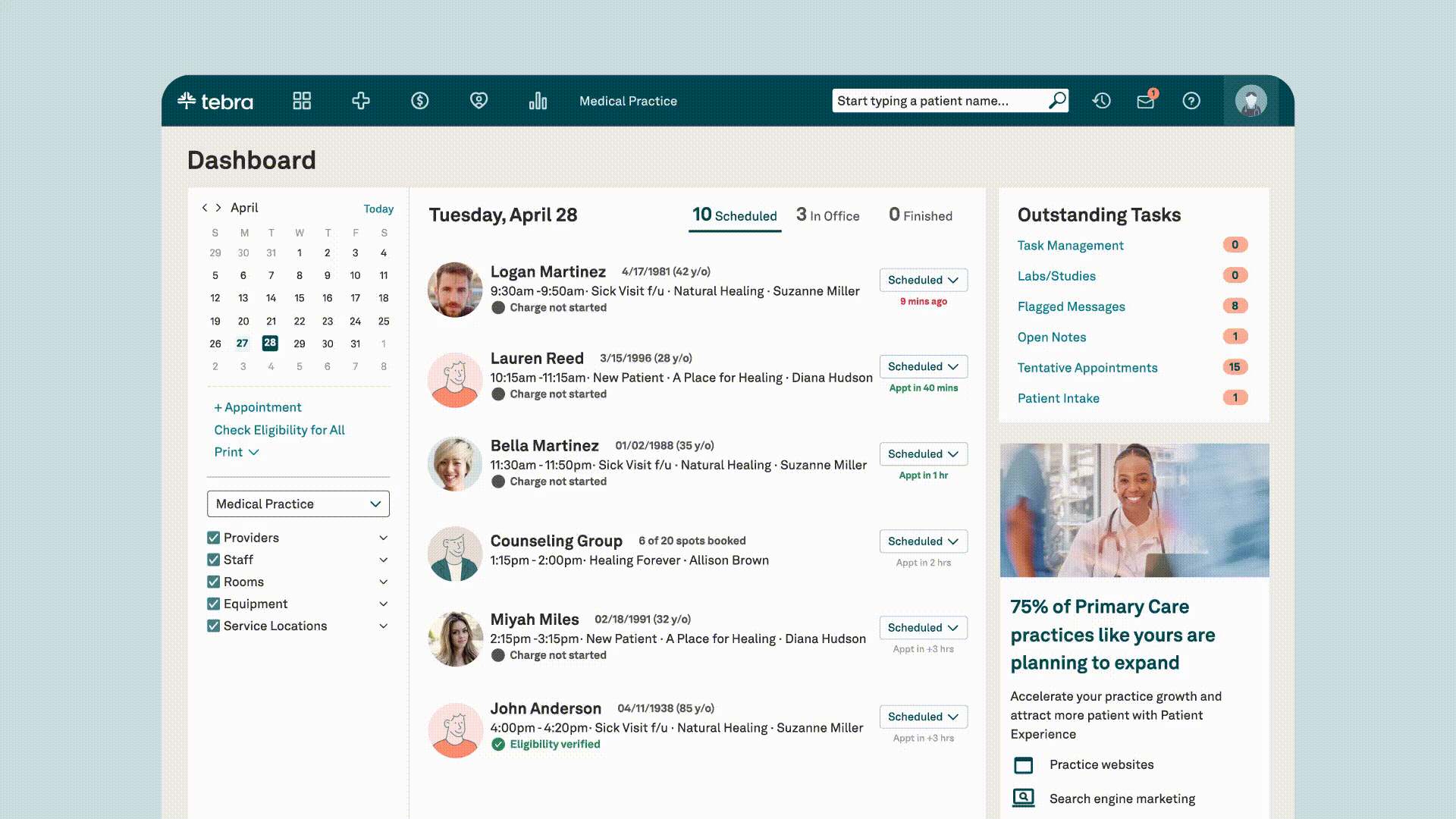How to clean up and manage your EHR inbox
Effective EHR inbox management is the key to harnessing your EHR’s full potential.

At a Glance
- Organize your EHR inbox with filters and labels to streamline message management and prioritize critical communications.
- Implement a daily maintenance routine to ensure timely responses and reduce clutter, enhancing overall efficiency.
- Delegate tasks and use templates for common responses to improve time management and focus on high-priority patient care.
Electronic health records (EHRs) have revolutionized patient information management in healthcare. These systems consolidate administrative and clinical data, enhancing decision-making, patient care, and clinical outcomes. Tebra’s 2024 EHR survey reveals a staggering 110% increase in EHR adoption among United States office-based physicians since 2008, with 88% now using these systems.
However, the EHR inbox has a dark side. While it centralizes crucial information, poor management can lead to clutter, missed details, delayed responses, and compromised patient care. The consequences extend beyond inefficiencies, potentially causing stress for both you and your patients.
Effective EHR inbox management is the key to harnessing your EHR’s full potential. Read on for our expert tips and a practical checklist to help you streamline your EHR inbox, optimize workflows, and enhance patient care.
Understanding the importance of an organized EHR inbox
EHR systems are a fantastic way to optimize workflows, but each is only as good as your vigilance and organization. An organized EHR inbox is crucial for several reasons:
Impact on patient care
First and foremost, an organized EHR inbox can and will have a direct impact on patient care.
By consolidating patient records and clinical data into a central hub, healthcare providers (and their teams) can easily access patient information. This, in turn, helps them provide timely and accurate information to patient inquiries. Moreover, centralized access to patient records can reduce medical errors by improving the accuracy of medical documentation.
Tebra allows you to communicate with patients and with other providers through a secure, all-in-one platform. Learn more.
Efficiency and time management benefits
Beyond providing timely patient care, a clutter-free EHR inbox can help improve team collaboration and eliminate redundancies. This saves valuable time that could be better spent on patient care.
Common EHR inbox management challenges
As much as any EHR system can do, managing an EHR inbox presents unique and significant challenges:
- High message volume: Any healthcare provider likely experiences daily inundation. Messages are usually patient inquiries, lab test results, and internal communications, and they typically run the gamut from emergencies to completely irrelevant.
- Duplication: Like any inbox, duplicate or irrelevant messages can contribute to clutter, making it harder to find and ultimately address the most important messages of the lot.
- Prioritization and triage: With hundreds of messages landing in your EHR inbox every day, it can be hard to think big picture. Determining which messages require immediate attention and which can be addressed later may not always be easy, but it is crucial.
- Time constraints: A full patient roster is great, but there are only so many hours in a day — leaving providers with limited time to manage their inboxes.
Step-by-step guide to cleaning up your EHR inbox
Use filters and labels
You might be surprised to know that the organization and maintenance of your EHR inbox can start long before the messages begin pouring in. Here, we’re talking about setting up and using the filtering and labeling features of your EHR system to automatically sort incoming messages into predefined categories (i.e., care team and staff messages, refill requests, patient portal messages, and results). When setting up your EHR inbox, be sure to organize it with folders and tags. Once the filtering system is in place, the system does the heavy lifting for you. It automatically files messages into their folders so you don’t have to do it manually.
Implement a triage system for incoming messages
While conducting your daily maintenance, start by sorting messages into categories such as urgent, follow-up, informational, and junk. This will help you organize your EHR inbox and prioritize your workflow. This is also a good time to delete any duplicate or irrelevant messages to further reduce clutter and make it easier to focus on important information.
Make time for daily maintenance
“Regular maintenance is key to effectively managing your EHR inbox.”
Regular maintenance is key to effectively managing your EHR inbox, so be sure to set aside time each morning and afternoon to review and prioritize unread messages. This may also be a good time to archive old or irrelevant communications.
Schedule periodic cleanups
While you may dedicate specific times for inbox management each day, you’re not likely to get to inbox zero very often. So, it’s a good practice to schedule lengthier time blocks for inbox maintenance (weekly or bi-weekly, but try not to stretch it out further than that) to clean up any unread messages, messages that weren’t exigent, and whatever else is lingering in your EHR inbox.
Use templates where possible
Email message templates are an excellent time management tool and a helpful addition to any customer service toolbox. For non-emergent messages, where you may not have the time, information, or bandwidth to answer an inquiry, a template allows you to acknowledge the message and let the sender know you’re working on it and will get back to them.
When using templates, remember that they should only be used for non-emergent situations and informational purposes. Templates are a good tool for responding to prescription refill requests, change-of-appointment requests, and check-up reminders, but they should never be used to deliver test results or any other sensitive information.
Sample template for non-emergent incoming messages
Hi [Person name],
Thank you for contacting us!
We're working on your query and look forward to resolving it.
You should hear from a member of our staff within the next 24–48 hours. If you wish to get in touch with us sooner, please contact us at [phone number].
Thank you for your time and cooperation.
Regards,
[Your name]
[Designation]
Delegate when possible
Make sure your team is fully trained and well-versed in your EHR so they can also help maintain and organize your EHR inbox. With your staff in the loop, you can delegate tasks and assign non-critical messages to other team members. This will allow you to focus on high-priority tasks.
Taking it a step further, you might consider identifying an EHR specialist on your team. As the in-house expert, this person would ideally undergo extensive training on your EHR system so that they can take the lead in EHR inbox management and maintenance, delegate as needed, and have the necessary skills to troubleshoot any issues that arise.
Tame your EHR inbox for peak performance
While the right EHR system can be infinitely helpful, it is only as good as its implementation, care, and maintenance. The EHR inbox, often a hub of critical information, demands particular attention. Left disorganized, it can compromise patient care, boost team stress, and undermine your practice’s efficiency.
The key to overcoming these challenges lies in implementing strategic management practices that include regular maintenance and thoughtful organization. By taming your EHR inbox, you not only streamline operations but also enhance patient care and team well-being.

You Might Also Be Interested In
Optimize your independent practice for growth. Get actionable strategies to create a superior patient experience, retain patients, and support your staff while growing your medical practice sustainably and profitably.
Subscribe to The Intake:
A weekly check-up for your independent practice

Suggested for you
Get expert tips, guides, and valuable insights for your healthcare practice









